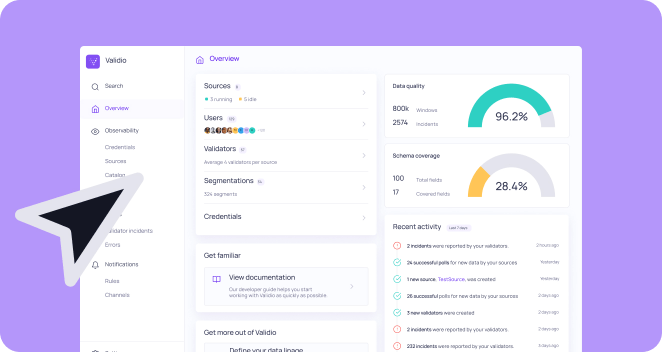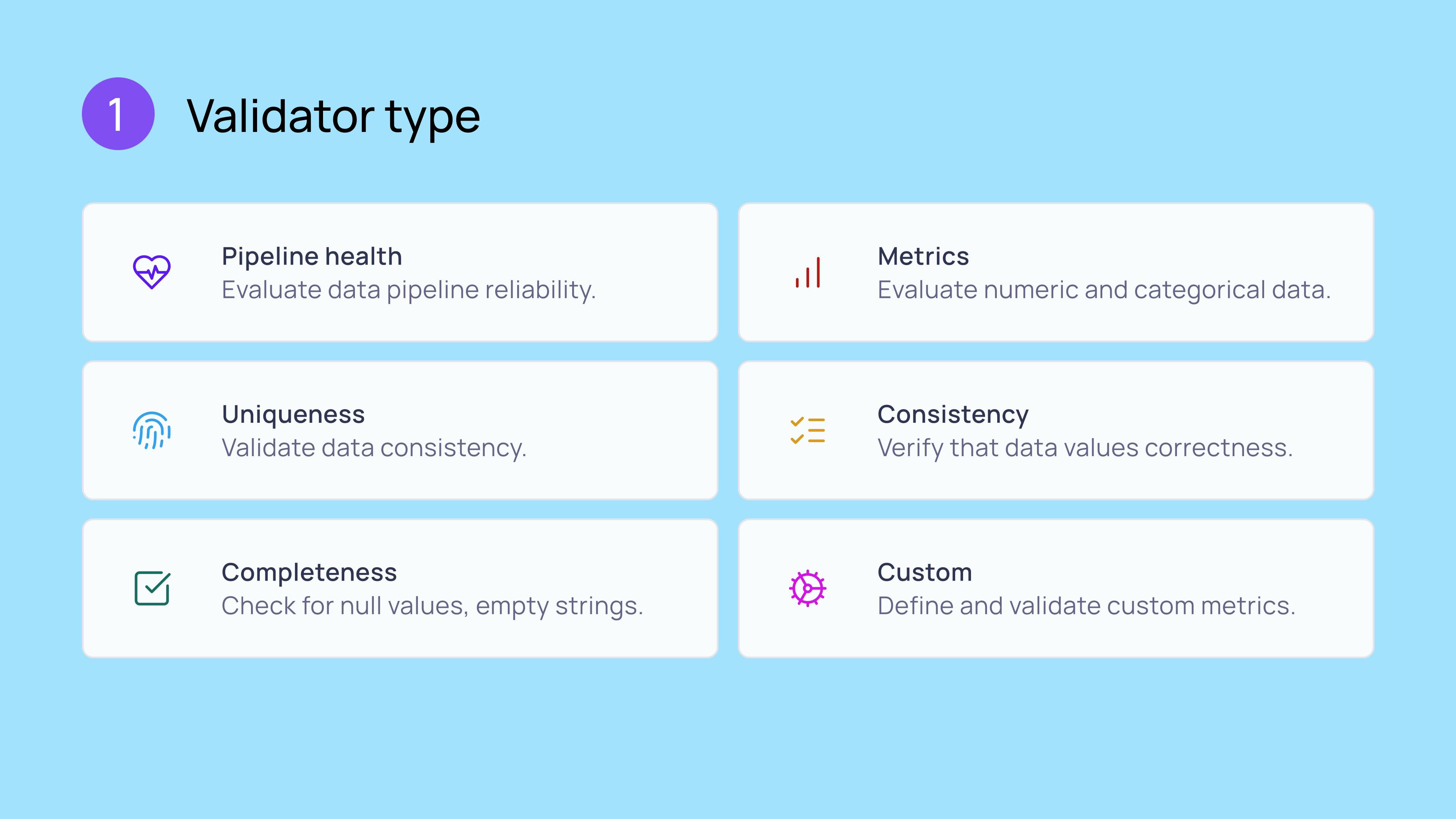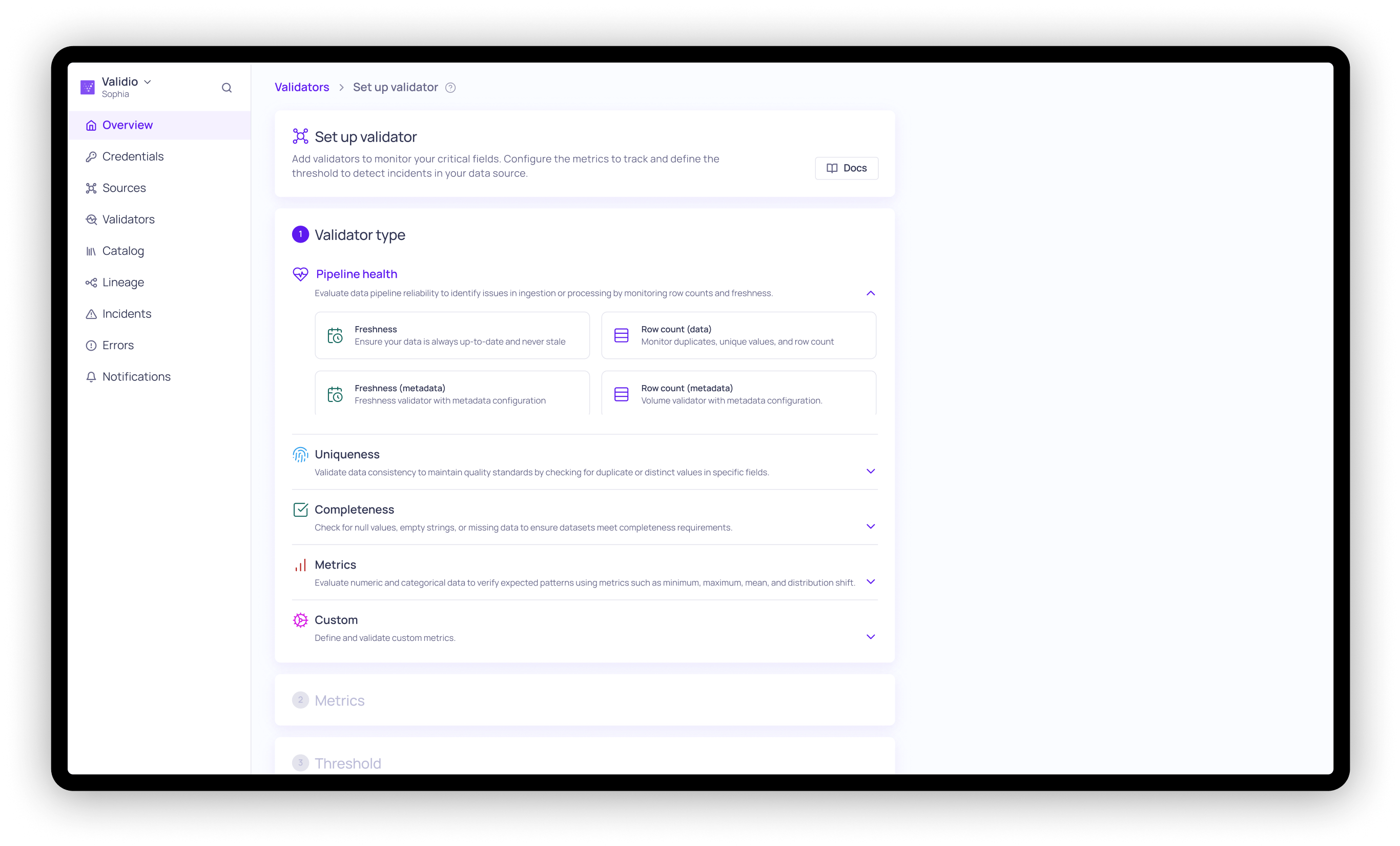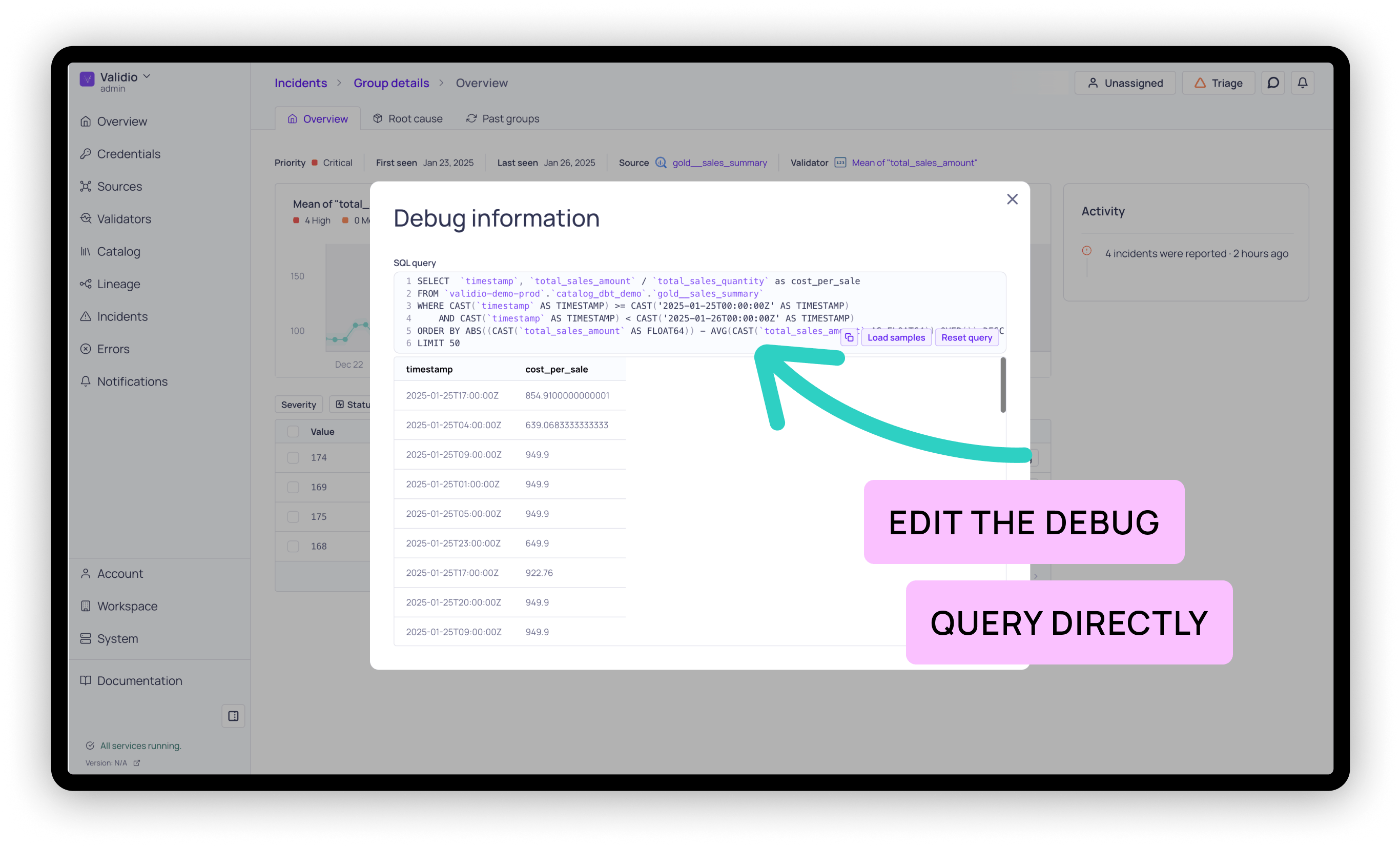TL;DR
The Validio 4.5 release includes updates to incident commenting, inherited ownership and an updated validator workflow - check the changelog for all details. For this blog post, we’ll dive deeper into the updated validator workflow. In short, this is what we’ve added:
- Use case based validator setup: The validator wizard has been simplified and redesigned to be based around data quality use cases and categories of validations, such as pipeline health, data consistency, and completeness.
- Duplicate and iterate on existing validators: Easily edit already configured validators, or use existing validators as a template for new data observability validators without having to recreate all of the work.
- Editable debug query: Expand and edit data issue debug queries directly to make root-cause analysis easier.
- Basic validator setup: Set up basic data quality validations like null filters and referential integrity checks without having to write everything with custom SQL.
If you’re ready to get started, this is all rolled out in the latest release. Or, read on for a deep dive on how we’ve made the validator workflow better.





